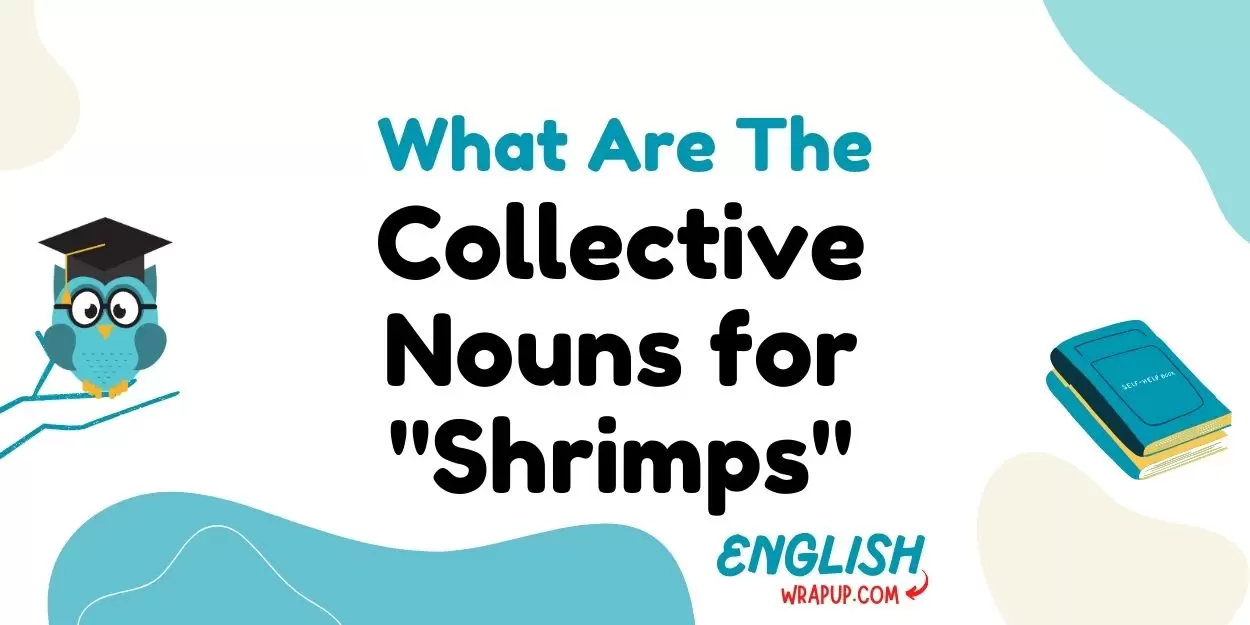Shrimps, the small but fascinating crustaceans found in oceans, rivers, and lakes, play a vital role in marine ecosystems and are a popular seafood delicacy. When grouped together, these tiny creatures are described using various collective nouns, each providing a unique perspective on their behavior and characteristics.
In this article, we will explore the concept of collective nouns and delve into some intriguing examples specifically related to shrimps.
What Are Collective Nouns?
Collective nouns are words used to describe a group of individuals or things considered as a single entity. These nouns simplify our language and provide a more vivid and interesting way to refer to collections of objects, animals, or people.
For example, instead of saying “a group of birds,” we can say “a flock of birds,” which is more expressive and efficient.
Best Collective Nouns for Shrimps
- A bed of shrimps
- A troupe of shrimps
- A colony of shrimps
- A swarm of shrimps
- A school of shrimps
- A cast of shrimps
- A flotilla of shrimps
- A clutch of shrimps
- A flick of shrimps
- A squad of shrimps
Let’s explore each of these collective nouns in more detail.
A Bed of Shrimps
Explanation
A “bed of shrimps” refers to shrimps found together on the ocean floor, often in a specific habitat.
Scenario
While snorkeling, we observed a bed of shrimps nestled among the seaweed, each one perfectly camouflaged.

A Troupe of Shrimps
Explanation
A “troupe of shrimps” highlights the playful and active nature of shrimps as they move together in groups.
Scenario
The diver was delighted to see a troupe of shrimps performing a synchronized swim around the coral reef.
A Colony of Shrimps
Explanation
A “colony of shrimps” denotes a large, organized group of shrimps living in a particular area, often for breeding purposes.
Scenario
Marine biologists studied the colony of shrimps to understand their breeding habits and social structures.
A Swarm of Shrimps
Explanation
A “swarm of shrimps” describes a large, dense group of shrimps moving together, often seen during feeding times.
Scenario
The fishermen encountered a swarm of shrimps as they cast their nets into the shallow waters.
A School of Shrimps
Explanation
A “school of shrimps” emphasizes the coordinated movement of shrimps as they swim together, similar to fish.
Scenario
The aquarium featured a mesmerizing display of a school of shrimps swimming gracefully in unison.

A Cast of Shrimps
Explanation
A “cast of shrimps” refers to a group of shrimps that appear to be cast together, often seen when they are washed ashore.
Scenario
After the storm, a cast of shrimps was found along the beach, creating a natural buffet for the seagulls.
A Flotilla of Shrimps
Explanation
A “flotilla of shrimps” depicts shrimps moving together in a formation that resembles a fleet of small boats.
Scenario
Kayakers paddling through the mangroves were surprised by a flotilla of shrimps skimming the water’s surface.
What Are The Collective Nouns for “Robins”
A Clutch of Shrimps
Explanation
A “clutch of shrimps” is used to describe a small, tightly-knit group of shrimps, often found in protective crevices.
Scenario
Peering into the rock crevice, the diver discovered a clutch of shrimps hiding from predators.
A Flick of Shrimps
Explanation
A “flick of shrimps” captures the quick, darting movements of shrimps as they move rapidly in different directions.
Scenario
The photographer captured the flick of shrimps scattering as a larger fish approached.
A Squad of Shrimps
Explanation
A “squad of shrimps” conveys the idea of a small, coordinated group working together, often seen in hunting or defense.
Scenario
The squad of shrimps worked together to fend off the intruding crab, using their claws and quick movements.
Interesting Facts About Shrimps
Shrimps are remarkable creatures with a variety of interesting traits. They have a complex life cycle that includes multiple stages of metamorphosis. Shrimps are also known for their unique method of communication, using a process called “stridulation” to produce sounds.
Additionally, some species of shrimps exhibit symbiotic relationships with other marine animals, such as gobies and sea anemones, providing mutual benefits for survival.
Final Thoughts
Collective nouns enrich our language by providing precise and often vivid ways to describe groups of objects. The collective nouns for shrimps not only make our descriptions more interesting but also help us visualize and understand the context better.
Whether it’s a “bed of shrimps” or a “flick of shrimps,” each term offers a unique perspective on these fascinating creatures.Understanding and using collective nouns can enhance our communication, making it more colorful and precise.
Next time you observe shrimps, think about the various ways you can describe them and appreciate the richness they bring to our language.



